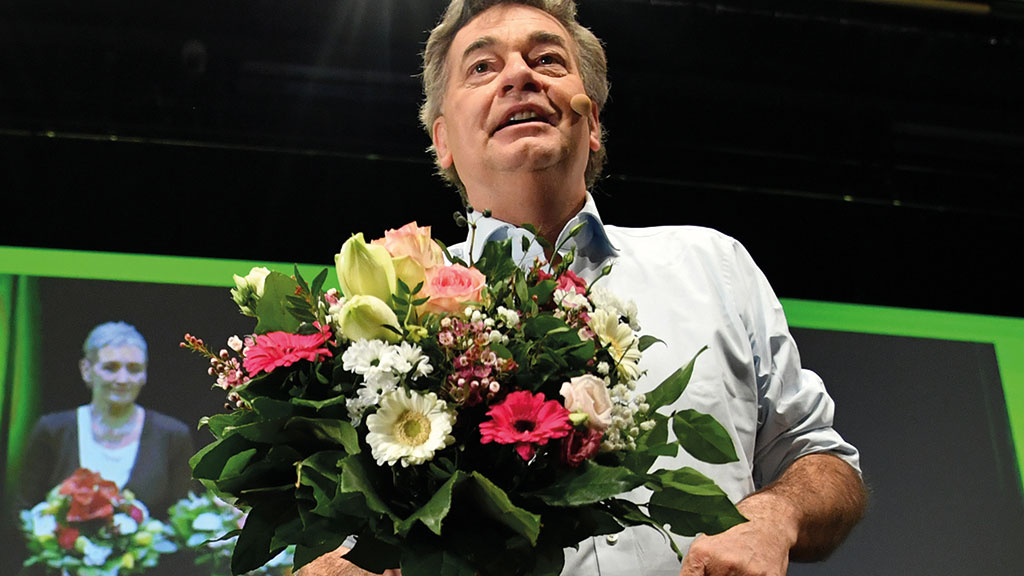Investors needn’t fear the rise of Europe’s green parties
Green parties across Europe are finding the centre-right to be natural allies. That will be great for business, says Matthew Lynn.


Over the last couple of decades, the green parties have positioned themselves as part of the radical left and the enemies of big business. Most corporate bosses and investors would probably rather see hard-left socialists in power than radical environmentalists. At least socialists are in favour of a productive economy, even if they don’t have much idea how to create one. But maybe that view is out of date.
Austria’s blue-green pact
In Austria, the conservative People’s Party chancellor, Sebastian Kurz, has just formed a coalition with the greens after breaking with his allies on the populist right. In Germany the greens are now the fastest rising political force, overtaking the Social Democrats as the main opposition party. It won’t be long before they replace the SPD in a coalition with the Christian Democrats to take control of Europe’s largest economy. Similar blue-green pacts may soon be formed across Europe. Parties that were once at opposite ends of the spectrum are working together.
Kurz’s move is the most interesting because it maps out the amount of common ground shared by conservative parties and environmentalists. The coalition agreement includes plenty of policies that will keep the greens happy, such as increasing the taxes on air travel, expanding the country’s rail network, a commitment for all of Austria’s electricity to be produced from renewable energy sources by 2030, and targets to make the country completely carbon neutral by 2040. But it also has plenty to keep the conservatives and their business allies happy as well, such as a commitment to cutting both personal and corporate taxes, tighter immigration controls and measures to promote national identity. Haggling out a deal looks to have been surprisingly easy.
MoneyWeek
Subscribe to MoneyWeek today and get your first six magazine issues absolutely FREE

Sign up to Money Morning
Don't miss the latest investment and personal finances news, market analysis, plus money-saving tips with our free twice-daily newsletter
Don't miss the latest investment and personal finances news, market analysis, plus money-saving tips with our free twice-daily newsletter
In Germany, too, either after the present grand coalition falls apart, or after fresh elections a similar platform might be agreed. Angela Merkel’s CDU has already announced a package of environmental policies costing €60bn. A coalition with the greens would go further, but it wouldn’t exactly be a radical change of direction.
Beyond the fringe
We shouldn’t be that surprised that conservatives and greens can work together. There is no inherent ideological conflict between the two sides. Sure, a few environmentalists think any form of growth is bad in itself, but that is a fringe view and one that is fading as environmental parties move into the mainstream. There is nothing about tackling climate change, controlling pollution, or creating cleaner, healthier living spaces that will trouble anyone on the centre right. And among the more thoughtful greens, there may soon be a growing recognition that market- based solutions to environmental challenges may be more effective than big state-led projects. And that a wealthier economy will be able to afford to protect the environment better than a struggling one.
Indeed, some of the major growth industries of the next decade will be rooted in protecting the environment. Renewable energy is already a big business, and one that is getting more profitable (and competitive with fossil fuels) all the time. The battery industry, which will be vital as we switch to renewable electric power, will be just as big. Electric cars are already turning into the fastest growing sector of the automobile industry. Supermarkets and retailers have already invested heavily in making their operations more ecologically friendly; plastic bags are being phased out, and more and more food is sourced locally.
The greens are a rising political force in every European country. Business and investors might until recently have viewed that with trepidation. But if they can be allied with the centre-right, they could easily win a majority of the votes, and a mix of massive investment in trains, renewable energy, and curbing carbon emissions, along with tax cuts and pro-business competition policy, sounds like a credible combination. Green investment will stimulate demand, and so will tax cuts, while deregulation will encourage entrepreneurship. Businesses and greens can, it turns out, be natural allies.
Get the latest financial news, insights and expert analysis from our award-winning MoneyWeek team, to help you understand what really matters when it comes to your finances.
Matthew Lynn is a columnist for Bloomberg, and writes weekly commentary syndicated in papers such as the Daily Telegraph, Die Welt, the Sydney Morning Herald, the South China Morning Post and the Miami Herald. He is also an associate editor of Spectator Business, and a regular contributor to The Spectator. Before that, he worked for the business section of the Sunday Times for ten years.
He has written books on finance and financial topics, including Bust: Greece, The Euro and The Sovereign Debt Crisis and The Long Depression: The Slump of 2008 to 2031. Matthew is also the author of the Death Force series of military thrillers and the founder of Lume Books, an independent publisher.
-
 Rachel Reeves's Autumn Budget: What it means for the UK
Rachel Reeves's Autumn Budget: What it means for the UKOpinion A directionless and floundering government has ducked the hard choices at the Autumn Budget, says Simon Wilson
-
 The reinvention of the high street – and how to invest
The reinvention of the high street – and how to investThe high street brands that can make shopping and leisure an enjoyable experience will thrive, says Maryam Cockar
